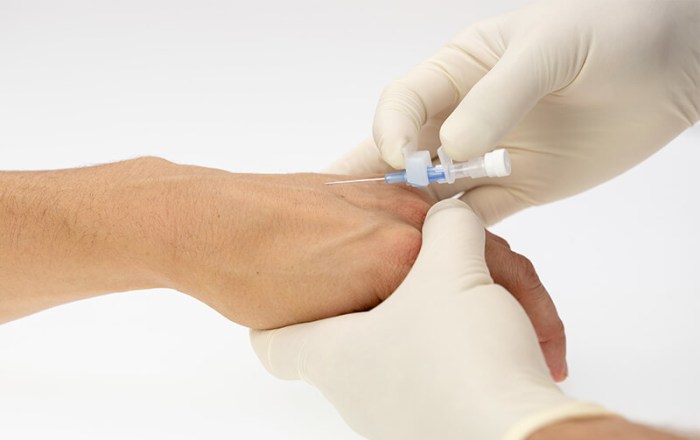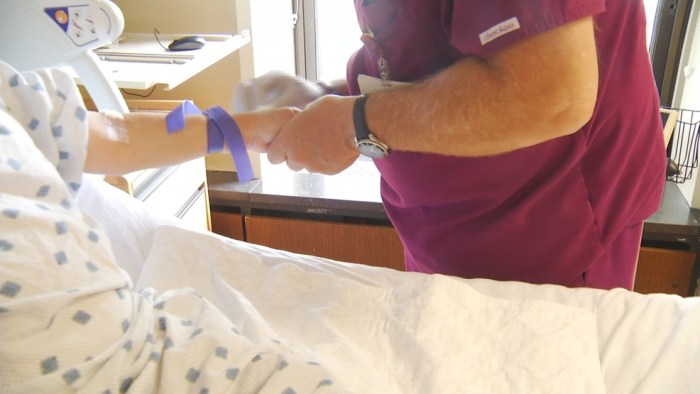A nurse is planning to insert a peripheral IV catheter, a procedure that involves inserting a small tube into a vein to administer fluids or medications. This comprehensive guide will provide a step-by-step overview of the process, including equipment gathering, patient assessment, insertion technique, post-insertion care, troubleshooting, and documentation.
Equipment Gathering

The successful insertion of a peripheral IV catheter requires the use of appropriate equipment. A sterile field is essential to prevent contamination and infection. The following equipment is necessary:
- IV catheter
- IV tubing
- IV bag
- IV pole
- Alcohol wipes
- Gauze pads
- Tourniquet
- IV start kit
Patient Assessment, A nurse is planning to insert a peripheral iv catheter
Before inserting an IV catheter, a thorough patient assessment is crucial to ensure the safety and success of the procedure. This includes:
- Patient history:Medical history, allergies, and current medications should be reviewed.
- Physical examination:The patient’s skin, veins, and overall condition should be assessed.
- Vein selection:The most appropriate vein for catheter insertion should be identified based on its size, visibility, and accessibility.
Insertion Technique
The insertion technique involves several steps:
- Skin preparation:The insertion site is cleaned with an alcohol wipe and allowed to dry.
- Vein puncture:The vein is punctured with the IV catheter at a 15-30 degree angle.
- Catheter advancement:The catheter is advanced into the vein until blood is aspirated into the flashback chamber.
- Securing the catheter:The catheter is secured with a transparent dressing.
Potential complications include bleeding, infection, and thrombosis. These complications can be managed by applying pressure to the insertion site, administering antibiotics, and removing the catheter, respectively.
Post-Insertion Care
After insertion, the IV catheter requires proper care to prevent complications:
- Monitoring the IV site:The IV site should be monitored regularly for signs of infection or infiltration.
- Dressing changes:The dressing should be changed every 24-48 hours.
- Potential complications:Complications such as phlebitis, extravasation, and infiltration should be promptly addressed.
Troubleshooting
Common problems during IV catheter insertion include:
- Difficulty locating a vein:Use a tourniquet to make the veins more prominent.
- Catheter not advancing:Reposition the catheter or try a different vein.
- Blood not aspirated:Advance the catheter further or try a different vein.
If these problems persist, seek assistance from a more experienced nurse or physician.
Documentation
Accurate documentation is essential for patient safety and legal protection. The following elements should be included:
- Patient’s name and medical record number
- Date and time of insertion
- Insertion site
- Catheter size and type
- Any complications or difficulties encountered
Answers to Common Questions: A Nurse Is Planning To Insert A Peripheral Iv Catheter
What is the purpose of a peripheral IV catheter?
A peripheral IV catheter is used to administer fluids, medications, or blood products directly into a patient’s vein.
What are the potential complications of IV catheter insertion?
Potential complications include infection, bleeding, hematoma, and nerve damage.
How long can a peripheral IV catheter remain in place?
The length of time a peripheral IV catheter can remain in place varies depending on the patient’s condition and the type of catheter used, but typically it is removed within 72 hours.


